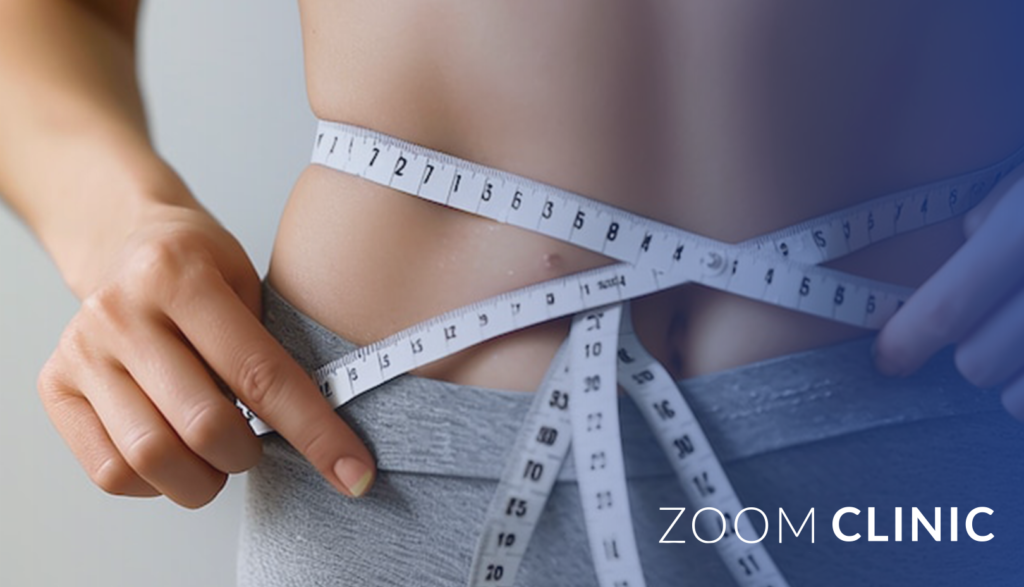In today’s society, the concept of the “perfect body shape” is often portrayed through various media channels, fashion trends, and cultural ideals. However, the idea of a perfect body is subjective, varying greatly depending on personal preferences, cultural influences, and individual goals. For over a decade, our bariatric surgery clinic in Turkey has helped thousands of individuals achieve their desired body shapes, offering tailored solutions to meet each person’s unique needs.
In this article, we will delve into the concept of the perfect body shape, discuss different body types, and provide practical advice on how you can achieve your ideal form. We will also offer insights on how to determine your body shape and discuss the surgical options available to those seeking transformative changes.
Table of content
1. Understanding the Concept of the Perfect Body Shape
The notion of a perfect body shape is not universal; it varies from culture to culture and evolves over time. Historically, different societies have idealized different body shapes. For example:
- The Hourglass Figure: In Western cultures, the hourglass figure, characterized by a well-defined waist and balanced hip and bust measurements, has long been considered a symbol of femininity and fertility.
- The Athletic Build: In many modern societies, a toned and athletic build, often associated with fitness and health, is highly coveted.
- The Slim Figure: In many Eastern cultures, a slim, delicate frame has traditionally been seen as the epitome of beauty.
These ideals shift with time, influenced by fashion, celebrities, and even global movements. The key to achieving the perfect body shape lies not in conforming to a specific ideal, but in understanding and embracing your own unique body.
2. The Role of Genetics in Body Shape
Genetics play a significant role in determining body shape. The way our bodies store fat, muscle distribution, and even bone structure are largely influenced by our genetic makeup. Understanding the genetic factors at play can help individuals set realistic expectations and choose the right approach to achieving their desired body shape.
3. Types of Body Shapes

بThere are generally five main body shapes that people fall into:
- Hourglass: Characterized by a well-defined waist with balanced bust and hip measurements.
- Pear: Defined by larger hips compared to the bust, often with a well-defined waist.
- Apple: Marked by a larger midsection, with narrower hips and a less defined waist.
- Rectangle: Features a straight up-and-down figure with little definition at the waist.
- Inverted Triangle: Noted by broader shoulders compared to the hips, often with a well-defined waist.
Each body shape has its unique features and may require different strategies for achieving balance and harmony. Understanding your body shape is the first step in working towards your ideal body.
4. How to Determine Your Body Shape
Determining your body shape is a simple process that involves measuring key areas of your body and analyzing the proportions. Here’s how you can do it:
- Bust: Measure around the fullest part of your bust, keeping the tape measure parallel to the ground.
- Waist: Measure around the narrowest part of your waist, usually just above the belly button.
- Hips: Measure around the fullest part of your hips and buttocks.
Once you have these measurements, you can compare the ratios to identify your body shape:
- Hourglass: If your bust and hip measurements are roughly equal, with a significantly smaller waist measurement, you likely have an hourglass shape.
- Pear: If your hips are wider than your bust, with a well-defined waist, you fall into the pear category.
- Apple: If your waist is larger than your hips and bust, you have an apple-shaped body.
- Rectangle: If your bust, waist, and hips are roughly the same size, you have a rectangular shape.
- Inverted Triangle: If your shoulders or bust are wider than your hips, you have an inverted triangle shape.
Understanding your body shape allows you to make informed decisions about diet, exercise, and potential surgical interventions to achieve your desired look.
5. The Role of Diet and Exercise in Achieving the Perfect Body Shape
While genetics set the stage for your body shape, diet and exercise play crucial roles in sculpting and maintaining it.
- Diet: Tailoring your diet to your body shape can help you achieve balance. For example, apple-shaped individuals may benefit from a diet rich in whole grains and lean proteins to reduce abdominal fat, while pear-shaped individuals may focus on foods that help tone the lower body.
- Exercise: Different exercises target different areas of the body. Strength training and cardio exercises can be customized to enhance or minimize certain areas, depending on your body shape.
6. Surgical Solutions for Achieving the Perfect Body Shape
For some individuals, diet and exercise alone may not be sufficient to achieve their desired body shape. In such cases, surgical interventions can provide significant and lasting results. Our clinic specializes in a range of bariatric and body contouring surgeries, including:
- Gastric Bypass and Sleeve Gastrectomy: These weight loss surgeries are designed for individuals with a higher BMI, helping them achieve significant weight reduction and improve their overall health.
- Liposuction: Liposuction can target stubborn fat deposits that are resistant to diet and exercise, helping to contour the body.
- Tummy Tuck (Abdominoplasty): This procedure removes excess skin and fat from the abdomen, often after significant weight loss, to create a smoother, firmer profile.
- Breast Augmentation or Reduction: Adjusting the size and shape of the breasts can help achieve better body proportion.
- Buttock Augmentation: Enhancing the buttocks can create a more balanced and aesthetically pleasing silhouette, especially for individuals with a rectangular or inverted triangle body shape.
7. Post-Surgery Care and Maintaining Your New Body Shape
Achieving your perfect body shape through surgery is just the beginning. Maintaining your new form requires a commitment to a healthy lifestyle. We provide comprehensive post-operative care plans, including dietary guidance, exercise regimens, and follow-up consultations to ensure long-term success.
8. The Psychological Aspect of Body Transformation
Changing your body shape can have profound effects on your self-esteem and mental health. Our clinic offers psychological support services to help you navigate the emotional aspects of your transformation, ensuring that your new body shape contributes positively to your overall well-being.
9. Real Stories: Testimonials from Our Patients
Hearing from others who have undergone similar journeys can be incredibly inspiring. In this section, we share testimonials from patients who have achieved their perfect body shape with our help. Their stories provide insights into the challenges and triumphs of body transformation.
How to Determine Your Body Shape: A Step-by-Step Guide
Introduction: Understanding the Importance of Knowing Your Body Shape
Knowing your body shape is crucial for choosing the right clothing, creating a balanced appearance, and even tailoring your fitness routine to achieve your desired look. This guide will help you accurately determine your body shape using simple measurements and provide insights into what each shape represents.
Step 1: Gather the Necessary Tools
Tools You’ll Need
- Measuring Tape: A soft, flexible measuring tape is essential for accurate measurements.
- Mirror: A full-length mirror helps you visualize your body proportions.
- Pen and Paper: To note down your measurements for easy reference.
Step 2: Take Your Measurements
1. Bust Measurement
- How to Measure: Stand straight and wrap the measuring tape around the fullest part of your bust. Ensure the tape is parallel to the ground and not too tight.
- Why It’s Important: The bust measurement helps determine the upper body’s proportion compared to the hips and waist.
2. Waist Measurement
- How to Measure: Locate the narrowest part of your torso, usually just above the belly button, and wrap the measuring tape around it. Keep the tape snug but not constricting.
- Why It’s Important: The waist is a key area that defines the overall shape of your body and distinguishes different body types.
3. Hip Measurement
- How to Measure: Stand with your feet together and measure around the fullest part of your hips and buttocks. Make sure the tape is level and secure.
- Why It’s Important: Hip measurements help determine the lower body’s proportion relative to the bust and waist.
Step 3: Analyze Your Measurements
Comparing Measurements: The Key to Identifying Your Body Shape
- Hourglass Shape: Your bust and hip measurements are nearly equal, with a significantly smaller waist. This shape is characterized by balanced proportions and a defined waist.
- Pear Shape: Your hips are larger than your bust, with a well-defined waist. This shape features a fuller lower body compared to the upper body.
- Apple Shape: Your waist is larger than your hips and bust. This shape often has a fuller midsection with a less defined waist.
- Rectangle Shape: Your bust, waist, and hips are almost the same size, creating a straight, up-and-down figure with little waist definition.
- Inverted Triangle Shape: Your shoulders or bust are wider than your hips. This shape is noted for broader shoulders or chest, tapering down to narrower hips.
Step 4: Understand the Characteristics of Each Body Shape
Hourglass Shape
- Characteristics: Balanced upper and lower body, defined waist.
- Styling Tips: Emphasize your waist with fitted clothing and belts to highlight your curves.
Pear Shape
- Characteristics: Wider hips, narrower upper body, defined waist.
- Styling Tips: Draw attention to your upper body with bright colors and patterns, while keeping the lower body simple.
Apple Shape
- Characteristics: Fuller midsection, less defined waist.
- Styling Tips: Choose clothing that elongates the torso and draws attention to your legs or neckline.
Rectangle Shape
- Characteristics: Equal measurements of bust, waist, and hips, minimal curves.
- Styling Tips: Create curves with peplum tops, flared skirts, and belts to cinch the waist.
Inverted Triangle Shape
- Characteristics: Broad shoulders or bust, narrower hips.
- Styling Tips: Balance your silhouette by adding volume to your lower body with A-line skirts or wide-leg pants.
Knowing your body shape is the first step toward embracing your unique figure and enhancing your natural beauty. Whether you’re dressing for an occasion, choosing a workout routine, or considering a new wardrobe, understanding your body shape will guide you in making the best choices for your physique. Remember, every body shape has its own beauty—celebrate yours!
10. Conclusion: Embrace Your Unique Body Shape
The perfect body shape is not a one-size-fits-all concept. It’s about finding what works best for you and embracing your uniqueness. Whether through diet, exercise, or surgical intervention, our clinic in Turkey is here to help you achieve your body goals. With over 10 years of experience and a commitment to excellence, we are the best in the field of bariatric surgery and body contouring.


